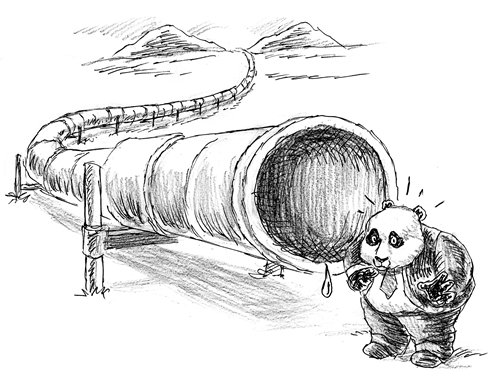Electricity Trade between China and Nepal. Good diversification for Nepal but...
Nepal-China Power Line Feasibility Report Filed
Last updated on February 11, 2018 Posted on February 9, 2018 by

Nepal’s Energy Ministry has sent a preliminary feasibility report to the Chinese government about the cross-border transmission line, which will allow electricity trade between Nepal and China’s Tibet Autonomous Region.
The details:
Nepal-China Power Line Feasibility Report Filed
Last updated on February 11, 2018 Posted on February 9, 2018 by

Nepal’s Energy Ministry has sent a preliminary feasibility report to the Chinese government about the cross-border transmission line, which will allow electricity trade between Nepal and China’s Tibet Autonomous Region.
The details:
- The report was dispatched to the Foreign Ministry for forwarding to the Chinese Embassy in Kathmandu which will eventually reach the State Grid Corporation of China (SGCC).
- The SGCC is the focal institution for the development of cross-border power lines between China and Nepal.
- Back in early 2017, SGCC officials had visited Nepal to hold discussions with the Energy Ministry and NEA to build a 400 Kv power line linking Rasuwagadhi and Kyirong across the northern border.
- During that meeting, the NEA Managing Director, Kulman Ghising had asked the Chinese delegation to extend the proposed transmission line further south up to Galchhi so that the power line could be linked to the Nepal-India cross-border transmission line proposed to be built in Rupandehi district.
- The 80-Km transmission line will link Galchhi in Dhading district with Rasuwagadhi on the border with China in the north.
- There are three possible routes for building the high voltage power line. Two of the alignments pass through Langtang National Park while the third one goes around it.
- According to Komal Atreya, chief of the monitoring department of the (NEA) who has been appointed as the focal person to coordinate with the Chinese side, the third route has been recommended from Nepal’s side, to avoid the National Park. Nepal has also sought financial assistance to build the cross-border transmission line which is estimated to cost Rs. 10 billion.
- “As the transmission line is necessary to supply electricity to the railway service which China plans to build up to Kathmandu, the northern neighbor is very keen on developing it,” said Komal Atreya.
- “China has erected a high voltage transmission line up to Shigatse, and if we show adequate commitment, they have agreed to extend it to Kyirong within one and half years, and ultimately connect it with the power line in Nepal,” he added.
- “After we receive the feasibility report prepared by the Chinese side, we will invite SGCC officials to Nepal or send our people to China to hold talks,” said a senior official at the Energy Ministry.
- “We will wait for the report prepared by the Chinese side before arranging bilateral talks to take the matter forward.”, he added.





